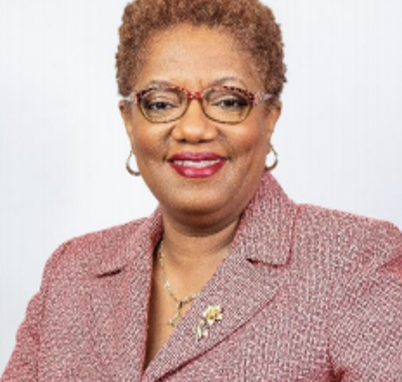Course on Blockchain Technologies and Central Banking
Digital format, from November 30 to December 4, 2020.
The Course on Blockchain Technologies and Central Banking is part of the activities of the Innovation Hub- The Course was aimed at providing a comprehensive introduction to blockchain technologies and its relevance for central banks.
The I Course on Blockchain Technologies and Central Banking was held in a digital format, from November 30 to December 4, 2020. It was jointly organized by the Banco Central do Brasil, the University College London and the Center for Latin American Monetary Studies (CEMLA). It was attended by 127 participants from 30 organizations, including central banks and banking supervisory authorities from Latin America and the Caribbean (LAC) and Europe. The Course was composed of theoretical sessions, workshops and use case presentations.
Introduction to Blockchain Technology
Jiahua Xu gave a general introduction to blockchain technology. Ms. Xu presented some definitions and concepts. She focused on the properties, components and purposes of these technologies, centering the discussion on a broad concept that conforms as follows: “a distributed data on a peer-to-peer network with a decentralized administration where timestamped data is chained by cryptography”. Ms. Xu introduced the seminal white paper ‘Bitcoin: A Peer-to-Peer Electronic Cash System’ by Satoshi Nakamoto and its proposal of a decentralized mechanism as an alternative to conventional payment systems. Regarding the possibility to simultaneously guaranteeing security, scalability and decentralization, it was highlighted that the improvement in two out of the three characteristics is detrimental to the third one in decentralized technologies. For instance, in a decentralized system it is possible to have double spending problem due to the latency in the registry of transactions. Finally, Ms. Xu described a decision path for the selection of blockchain technologies according to commonality of data, multiple users, openness of transactions, among other criteria.
Different Blockchain Technologies
In this session, Alessandro Recchia delved into more technical details about blockchain technologies. He noted that blockchain is based on cryptography, the study of securing communications to prevent third parties from its reading, as a mechanism to eliminate trusted third parties, and ensuring decentralization, security, resistance to manipulation, and direct auditability for the participants. In this presentation, it was shown how cryptographic techniques are based on the hardness of mathematical and computational problems and are meant to transform data by encryption and decryption. In this respect, a key concept in computational cryptography are hash functions, that transform data of an arbitrary length into data of a fixed size known as a hash value in such a way that: the hash value has no relation with the original data. In this process, it is easy to obtain the hash value via the original data given the hash function, but it is infeasible to reconstruct the original data from the hash value. Mr. Recchia explained the dynamics of a public/private key encryption system. For instance, a hash function transforms data of an arbitrary length into data of a fixed size known as a hash value; however, this mapping is difficult to reconstruct.
Token Creation and Consensus
This session was devoted to the diving into the main concepts and processes regarding to token creation and consensus. Ms. Jiahua Xu explained the concept of smart contracts, that comprises transferring money between addresses or contracts, and for which persist data and perform any type of computations. She noted that smart contracts are not designed for interaction with anything outside the blockchain, but they are powerful blockchain tools for programmability. Then it was described the complete process that a smart contract follows, which is: i) Write high-level code for the contract; ii) Test the contract, iii) Compile the contract into bytecode, iv) Send a transaction to deploy the contract, and v) Interact with the contract by sending transactions to the generated address.
This hands-on session helped the participants to learn how to execute smart contracts at a specific address and how to ensure that the operation is properly executed. The session continued with the Ethereum usage of gas concept, which relates to the costs that a transaction generates and has as purpose incentivize miners and create protection against DoS attacks. The first part of the session finalized with a hands-on example on how to program an Ethereum smart contract.
As part of this session, Ms. Xu mentioned the future developments of Ethereum which involve an increase in data capacity, a reduction in processing times, proofs of stake, sharding, among others. Then it was mentioned the current works on how blockchain can support game theory approaches, and the specific case of how an atomic SWAP developed with Hash Timelock Contracts works. Finally, Ms. Xu reviewed the topic decentralized finance by discussing on Automated Market Maker, Stablecoins and the Ethereum lending protocols.
Economics of DLT
Dr. Paolo Tasca discussed five issues: the trust issue, the meaning of money, Bitcoin as a public memory, Libra as convention and the currency competition.
The session started by showing how US consumers’ trust on banks has fallen down as well as their beliefs on the government over time, and how the Bitcoin rising has exacerbated this trust issue. Next, regarding to the meaning of money, Dr. Paolo Tasca reviewed two important concepts linked, public memory and convention. For the former, it was said that a ledger is a way of keeping track of who owns what, and also who owes and is owed what. In terms of conventions, Dr. Tasca mentioned that money is a social convention back by an accountable institution within the State that enjoys public trust. He continued his discussion by delving into the reasons of why Bitcoin is a public memory and Libra is a convention. For the Bitcoin case, Dr. Tasca mentioned that it was invented with the aim to give back to citizens the power of their data, by building a decentralized network in order to bypass institutionalized providers. So that through the use of a tamper-resistant distributed peer-validated time-stamped ledger open to everyone, Bitcoin created a public memory, where any needed rules and incentives can be enforced through its consensus mechanism where one CPU is equivalent to one vote. But despite its potential, Bitcoin hasn’t fulfilled its premises. On the other hand, history has shown that money as a convention needs to have a basis of trust, supported by some institutional arrangement. In recent times, it’s observed the proliferation of technology-enabled centralized platforms, which has set the place to the creation of a digital-platform economy, where trust is best fostered by those who controls the platforms, replacing the institutionalized trust providers and becoming the keepers of our digital identity and our trustworthiness. But as in the case of Bitcoin, Libra hasn’t fulfilled its premises, and recently its reliability as keepers of our data has been compromised. The session finalized with an extensive comparison between digital monies, including cryptocurrencies, stablecoins, corporate currencies and Central Bank Digital Currencies (CBDCs), presenting its advantages and disadvantages.
DLT Business Strategy
The session was devoted to the environment in which the DLT technology thrives, their actors and their interactions in the weaving of its complexity, as well as its implications as a disruptive character. It was presented by Nikhil Vadgama. First, Mr. Vadgama described the participants of the DLT ecosystem: a) Developers: Those in charge of the writing and reviewing of the code that supports the DLT system, its protocols, interfaces, dependent applications and interoperability capabilities; b) Gateways: The mechanisms and partakers that enable the communication inside and outside the system. They can be divided in turn into 5 categories: the gatekeepers regulate the access to the network; the oracles transmit data; the custodians oversee the assets; the issuers manage the recording of assets via tokens; and the exchanges assist the transactions of digital assets; c) Administrators: They regulate the access to the code repository. Their role and importance depend on the permittivity of the architecture. Closed systems require dedicated administrators, while open systems do not; and d) Participants: They are the users of the system that communicate with messages through the network. These include the miners and validators that create and incorporate records into the ledger, auditors that review the validity of the registries, and other end-users that interact with the system or other participants. Second, Mr. Vadgama defined a consortium as a group of participants with common processes, relationships and values that pool together resources for a common goal, while pooling the risks of the endeavor as well. Finally, Mr. Vadgama described the disruption that the DLT technology entails and how it will pervade as it matures with different degrees of visibility, characterized by de Gartner Hype Cycle. As disruptive as the internet was, DLT is changing the way it operates. He described the transition that will take place from what he named as the Web 2.0, apps and a way of interaction based on centralized servers, into the Web 3.0, based on P2P networks that run Decentralized Apps (Dapps) on top of it. This innovation is hyped: the false expectations caused by its overexposure will have to be compensated with the transition implied by the maturity and gradual reach into a significant majority.
Business applications of DLT
Mr. Vadgama gave a second presentation on the business applications of DLT. He began with a landscape of DLT within organizations. In general, blockchain is perceived as a technology that will have a more important role by solving different problems and by allowing more competitivity, even though its benefits might be overstated. Organizations are exploring the usage of different digital assets based on private, third-party, public solutions, among others, that provide greater security, speed and transparency. Next, he described some applications of blockchain. The first application mentioned was the monitoring of the distinct phases of the supply chain process, by transforming centralized infrastructures into real-time digitized ledgers with fully integrated functionalities to the internet, allowing an easier error tractability and payment flow. He proceeded with land registry and stated similar advantages for its application. Second, Mr. Vadgama presented how corporations may approach to DLT as an adaptation to a disruptive technology. He underlined that a focus put on an internal or an external starting point comes with their respective advantages and disadvantages. An internal approach allows a corporation to develop controlled solutions with the inherent benefits of the motivation of human resources and the exploitation of the ramifications of potential innovations; however, it requires a fostering environment that might not be met. External approaches can provide accelerated implementations of new technologies hand in hand with outside experts; nevertheless, the shocks between the adaptation and cultural processes might undermine the full implementation of the new technologies in the organization. It is noteworthy how corporates have kept expanding the number of patents around blockchain applications, with China leading the way. He then stated that companies choose between closed or open blockchain types, permissioned or permissionless, and centralized or decentralized systems. The configurations allow to set the desired levels of censorship resistance, tamper opposition, trust requirement, confirmation times, throughput capacities, overhead and efficiency of resources. Third, he introduced the concept of Initial Coin Offerings (ICOs): a form of fundraising based in cryptocurrencies tokens bought by early investors who expect future profits in a highly speculative market. While presenting some similarities with Initial Public Offerings (IPOs), based on equities, and crowdfunding, based on performance rewards, they allow more less binding schemes. However, ICOs have been involved in fraudulent practices that have affected their reception, propitiating their mutation into new forms of transactions with more regulatory and constraining characteristics. Finally, Mr. Vadgama talked about Decentralized Autonomous Organizations (DAOs) that consist in an organization represented by a set of long-term smart contracts. A DAO is entirely digital and based on collective decision making, with intrinsic limitations, such as the incapability of responding to unexpected decisions, the constraint to codifiable operations, and the ambiguity in its legal attributions.
Regtech
Professor Tomaso Aste delivered a recount of the context and the areas of application of DLT technologies in the financial industry regulation through technology, or Regtech. Professor Aste first commented that, as the industry relies in more automatized processes, its regulation is no longer possible with non-automatized tools. He then commented about how the sheer volume of information generated by the financial industry is of interest to the regulators and its increased analytical capabilities related to blockchain as a way to guarantee anonymity to consumers and citizens. He remarked how automation has kept expanding and now it is presented as the possible next revolution when it encompasses the area of decision making, with the concerning repercussions in for business, individuals and regulators. However, the nature of technological advancement has two cautionary points: it tends to be concentrated due to the high costs, and regulation falls short to include the new facets that are continuously appearing due to the fast pace of its evolution. Second, Professor Aste made a recap on important aspects and definitions of blockchain, restating that a blockchain is a series of blocks joined through a hash operation, it provides a time direction in the records, and has a consensus mechanism that relies on an agreed truth in a coordinated environment. He stated that the idea of a ledger is not a modern one, citing examples as old as the Mesopotamian clay ledgers from 3000 B.C. The modern blockchain technology can be traced to the late 70’s and early 80’s with hash trees and hash chains to the Bitcoin white paper by Satoshi Nakamoto. He remarked how decentralization, despite its intrinsic inefficiency, is a favored option that requires a scheme of incentives to function properly.
The Future of Digital Payment Systems
Dr. Geoffrey Goodell presented a rounded perspective of the current payment systems and how the challenges and opportunities that the new technologies will bring. First, he described the nature of payment clearing and settlement, and the way they take place between customers, merchants, issuers and acquirers through a card network. Mounted on that structure with affordable technological devices, he explained how the innovations on card payments have pursued to secure transactions in a fast, contactless and convenient manner. He also described how cash and retail banking payments takes form, and the benefits that the first entail over the latter, such as the privacy of transaction, custody of assets and the absence of mediation or possible blockage of operations. Cashless alternatives do not come with the mentioned advantages, and since the progression into their dominant usage seems unavoidable, central banks are incentivized into preserving a public payment option that allows them to guarantee inclusion and public utility and preserves the control over a part of the volume of transactions. He mentioned how in the UK experience, this shift has been observed predominantly on debit cards over cash, while open banking has not been relevant yet, for whatever reason cash is being abandoned in favor of electronic payments. Next, he deepened into the possible loss of privacy that the modern retail payments imply. Anyone who can access the flow of data involved in a transaction might infer traits on the agents that they would not like to make public. He noted that the alternative of anonymity does not provide a solution to the vices that currently cash has. He then summarized how modern cryptocurrencies have evolved since 1982 and detailed some of the stated reasons behind their conception, which usually orbit around privacy issues. He pointed out that a middle ground for regulation and cyberlibertarianism is the recognition of cryptocurrency of the former, and the acceptance of regulators for the sake of risk management matters of the latter.
Finally, Mr. Goodell proposed a government-issued electronic token, cleared and settled by independent actors with privacy mechanisms. He explained how this new solution would tackle perceived issues as the comparability to account-based solutions, the restriction of a new digital currency to a payment infrastructure, the incursion of central banks in a dominant role in transactions, the lack of privacy, and the substitution of CBDCs with stablecoins.
Central Banks Use Cases
During these sessions, four central banks presented their experience toward the exploration and possible implementation of Central Bank Digital Currencies (CBDC). These four use cases were conducted under the CEMLA’s Innovation Hub using the UCL devised framework.
Monday, November 30
Welcome remarks
Serafín Martínez Jaramillo, Advisor, CEMLA
Session 1. Introduction to Blockchain Technology
Jiahua Xu, UCL
Session 2. Different Blockchain Technologies
Alessandro Recchia, UCL
Tuesday, December 1
Session 3. Token Creation and Consensus
Jiahua Xu, UCL
Session 4.1. Special session on retail Central Bank Digital Currencies (CBDC) use cases UCL-CEMLA with Banco Central de Chile and the Bank of Jamaica
Chair: Serafín Martínez Jaramillo, Advisor, CEMLA
Miguel Musa, Leader of the Technological Observatory and Techlab, Banco Central de Chile
Novelette Panton, Division Chief of the Financial Markets Infrastructure Division, Bank of Jamaica
Session 4.2. DLT Workshop
Jiahua Xu, UCL
Wednesday, December 2
Session 5. Economics of DLT
Paolo Tasca, UCL
Session 6. DLT Business Strategy
Nikhil Vadgama, UCL
Thursday, December 3
Session 7. Business Applications of DLT
Nikhil Vadgama, UCL
Session 8.1. Special session on retail Central Bank Digital Currencies (CBDC) use cases UCL-CEMLA with Banco Central do Brasil and Banco de la República (Colombia)
Chair: Serafín Martínez Jaramillo, Advisor, CEMLA
Rafael Sarres de Almeida, Senior Advisor, Banco Central do Brasil
Fabio Mauricio Pinzón González, Chief Technical Officer, Banco de la República (Colombia)
Session 8.2. DLT Workshop
Jiahua Xu, UCL
Friday, December 4
Session 9. RegTech
Tomaso Aste, UCL
Session 10. The Future of Digital Payments
Geoffrey Goodell, UCL
Session 11. DLT Workshop: Q&A
Chair: Serafín Martínez Jaramillo, Advisor, CEMLA
 Jiahua Xu
Jiahua Xu
University College London (UCL)
Dr. Jiahua Xu is an award-winning researcher at UCL Centre for Blockchain Technologies and EPFL. She lectures Blockchain courses at both universities. She earned her PhD from the University of St. Gallen in Switzerland, MSc from the University of Mannheim in Germany, and BA from Fudan University in China. Her research interests lie primarily in blockchain economics, behavioral finance and risk management. Prior to her doctoral studies, she gained practical experience, among others, at KPMG, Siemens and Continental. Besides university engagements, she consults at FinTech startups and works pro bono at a not-for-profit organization Development International e.V. which specializes in labor rights research.
 Alessandro Recchia
Alessandro Recchia
University College London (UCL)
Alessandro Recchia - former group analyst and actual blockchain analyst at University College London.
 Miguel Ángel Musa
Miguel Ángel Musa
Central Bank of Chile
Mathematical Engineer from Pontificia Universidad Católica de Chile. Master of Science in Engineering Management, MIT. Leader of the Technological Observatory and Techlab of the Central Bank of Chile. These initiatives seek to foster innovation and accelerate the understanding and adoption of disruptive technologies in the Central Bank. The topics of experimentation and research range from Machine Learning, APIs to CBDC´s, digital payments and Blockchain technologies.
 Novelette Panton
Novelette Panton
Bank of Jamaica
Dr. Novelette Panton is the Division Chief of the Financial Markets Infrastructure Division at the Bank of Jamaica, where she has responsibility for the Payment System and Cambio & Remittance, Licensing & Monitoring Departments. The Payment System Department is responsible for ensuring that Jamaica’s payment and settlement systems, in particular, the systemically important systems, inclusive of the Real Time Gross Settlement (RTGS), the Central Security Depository (CSD), the Automated Clearing House (ACH), the Multilink and the Quality Network (QNET) Systems are safe, efficient, reliable and secure.
Novelette’s area of responsibility also extends to the provision of authorization to Payment Service Providers to issue electronic retail payment services, as well as, researching, advising and implementing FinTech innovations. In addition, the licensing and supervision of Money Services Businesses (MSBs), that is Cambios and Remittance entities fall under her purview.
Novelette has served the Bank of Jamaica for over 36 years in various areas of the Bank, inclusive of Currency, Economic Research, Administration, Corporate Risk and Financial Markets Infrastructure.
 Paolo Tasca
Paolo Tasca
University College London (UCL)
Dr. Paolo Tasca is a Digital economist specializing in P2P financial systems. He has been an advisor on blockchain technologies for different international organizations including the EU Parliament and the United Nations. Paolo is founder and Executive Director of the Centre for Blockchain Technologies (UCL CBT) at University College London.
 Nikhil Vadgama
Nikhil Vadgama
University College London (UCL)
Mr. Nikhil Vadgama is a Research Fellow of the UCL CBT and was responsible for orchestrating the world first accredited Blockchain Executive Education Programme. His experience has spanned multiple sectors including Education, Real Estate and FinTech. Most recently he has been involved in commercialization of academic research in the AI and Blockchain domains. He was previously an Investment Banker with HSBC. Nikhil has an MBA from INSEAD, an MPhys from Oxford University and has passed all three levels of the CFA programme.
 Rafael Sarres de Almeida
Rafael Sarres de Almeida
Banco Central do Brasil (BCB)
He is a Cybersecurity and Financial Technology Advisor at Central Bank of Brazil, where he researches about Distributed Ledger Technology, Central Bank Digital Currencies (CBDC) and cryptocurrencies. He is also a member of the steering committee of the ongoing Central Bank of Brazil´s Innovation Lab – LIFT, and a collaborator of Central Bank of Brazil´s Cyber Resilience Strategy for the Brazilian Financial System. He is a lecturer in Distributed Ledger Technology, cryptocurrencies and topics in cybersecurity.
 Fabio Mauricio Pinzón González
Fabio Mauricio Pinzón González
Banco de la República (Colombia)
Mr. Pinzón has been CTO of the Colombian central bank since 2010. He has a bachelor’s in science and a master’s degree in Computer Science and additional postgraduate studies in management, economy and geography. Along the road he has been branch manager, security officer, network and system administrator.
 Tomaso Aste
Tomaso Aste
University College London (UCL)
Tomaso Aste is professor of Complexity Science at UCL Computer Science Department. A trained Physicist, he has substantially contributed to research in complex structures analysis, financial systems modelling, artificial intelligence and machine learning. He is passionate in the investigation of the effect of technologies on socio-economic systems and currently he focuses on peer-to-peer and distributed systems. Prof. Aste is leading research on complexity science and network theory applied to socio-economic systems. He works with regulators on the application of FinTech and Blockchain to financial regulation. He is co-founder and Scientific Director of the UCL Centre for Blockchain Technologies, founder and Head of the Financial Computing and Analytics Group at UCL, Member of the Board of the ESRC LSE-UCL Systemic Risk Centre and Member of the Board of the Whitechapel Think Thank. He collaborates with the Financial Conduct Authority, The Bank of England and HMRC. He contributes the All-Party Parliamentary Group on FinTech. He is leading an initiative for training to FinTech central bankers and regulators across South America. He is advisor and consultant for several financial companies, banks, FinTech firms and digital-economy start-ups.
 Geoffrey Goodell
Geoffrey Goodell
University College London (UCL)
Dr. Geoffrey Goodell is a Senior Research Associate in the Financial Computing and Analytics Group of the Department of Computer Science at University College London. He is Convenor of the ISO working group on Foundations of Blockchain and Distributed Ledger Technologies and an academic advisor of the Belgium-based International Association of Trusted Blockchain Applications and the Blockchain for Europe Association. Dr Goodell has roughly a decade of experience as a structured products strategist and portfolio manager, and he was Partner and Chief Investment Officer of a boutique asset management firm in Boston. He is a CFA charter holder and has a PhD in computer science from Harvard University, an MBA from the University of Oxford, and an undergraduate degree in mathematics from MIT. At UCL, he draws on his industry knowledge to produce effective policy and systems recommendations to future-proof society and the economy specifically related to digital marketplaces, digital payment systems, and regulation.

